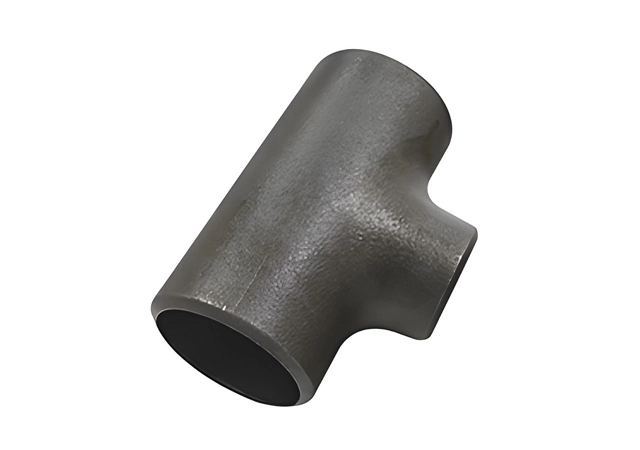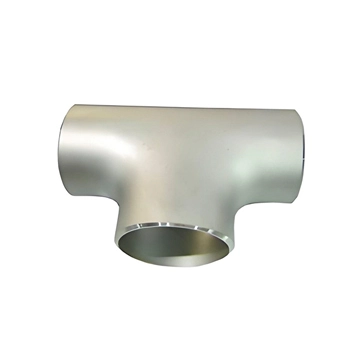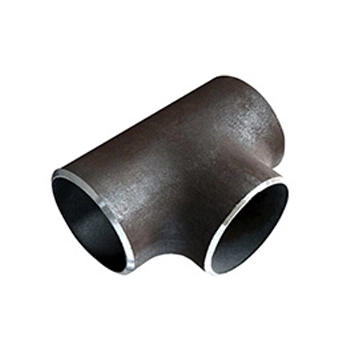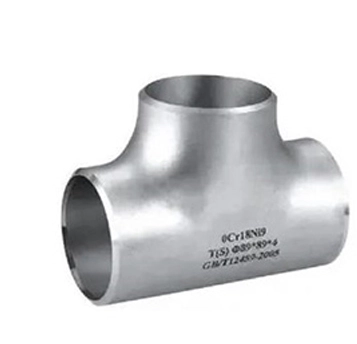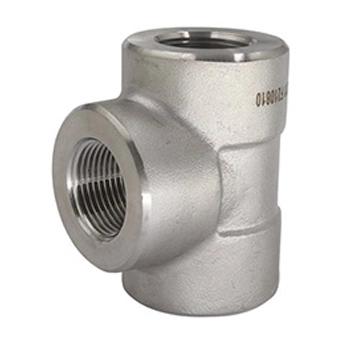What is Carbon Steel Tee?
carbon steel tee is a type of pipe fitting shaped like the letter "T," used to connect three pipes in a piping system. It allows for the branching of fluid flow, enabling the connection of auxiliary equipment or splitting of flow paths.
Made from high-quality carbon steel materials such as ASTM A234 or ASTM A105, carbon steel tees are known for their strength, durability, and cost-effectiveness. They are available in various sizes and conform to standards like ASME B16.9 and ASME B16.11.
These fittings are essential in industries such as oil and gas, chemical processing, power generation, and water treatment, where they provide reliable and efficient connections in high-pressure systems. Their versatility and robustness make them a popular choice for both residential and industrial applications, ensuring long service life and safe operation.
Types of Carbon Steel Tee:
Equal Tee: All three openings are the same size.
Reducing Tee: The branch connection is smaller in size than the main pipe.
Connection Methods of Carbon Steel Tees
Butt-Weld Connection pipe tees
Description: This is the most common method, where the tee is welded directly to the pipe. It provides a strong, leak-proof connection and is ideal for high-pressure applications.
Socket-Weld Connection pipe tees
Description: The pipe is inserted into a socket on the tee and then welded. This method simplifies installation and is suitable for smaller pipelines.
Threaded Connection pipe tees
Description: The tee has threads that match the threads on the pipe, allowing for easy connection and disconnection. This method simplifies maintenance.
Parameters of Carbon Steel Tee
| Parameter | Details |
| Material | Carbon steel (e.g., ASTM A234 WPB, ASTM A105). |
| Types | Equal tee, reducing tee. |
| Connection Methods | Butt weld, socket weld, threaded. |
| Sizes | 1/8" to 48" (DN6 to DN1200). |
| Pressure Ratings | Sch 40, Sch 80, Sch 160, etc. |
| Advantages | High strength, durability, cost-effective, versatile. |
| Disadvantages | Prone to corrosion, heavy, limited use in corrosive environments. |
| Applications | Oil and gas, power generation, chemical processing, water treatment, HVAC. |
| Standards | ASME B16.9, MSS-SP-75, ASTM A234, ASTM A105. |
| Surface Treatment | Galvanizing, painting, epoxy coating, sandblasting. |
Standards for Carbon Steel Tee
ASTM A234:Common grades include WPB, WPC, and various WPHY grades.
ASTM A105:such as in power plants and oil refineries.
ASTM A420:Ideal for applications requiring low-temperature performance, such as in cryogenic systems.
ASME B16.9: For Butt Weld Tees.
ASME B16.11: For Threaded and Socket Weld Tees.
MSS SP-43: For forged steel fittings.
Advantages of Carbon Steel Tees
High Strength: Carbon steel provides excellent mechanical strength, making it suitable for high-pressure and high-temperature applications.
Durability: Resistant to wear and tear, with a long service life.
Cost-Effective: More affordable than stainless steel or alloy steel fittings.
Versatility: Can be used in a wide range of industries and applications.
Weldability: Easy to weld, making it ideal for butt-weld and socket-weld connections
Applications of Carbon Steel Tees
Oil and Gas: For pipelines, refineries, and petrochemical plants.
Power Generation: In steam lines, boilers, and cooling systems.
Chemical Processing: For handling non-corrosive fluids and gases.
Water Treatment: In water distribution and wastewater systems.
HVAC: For heating, ventilation, and air conditioning systems.

 EN
EN

